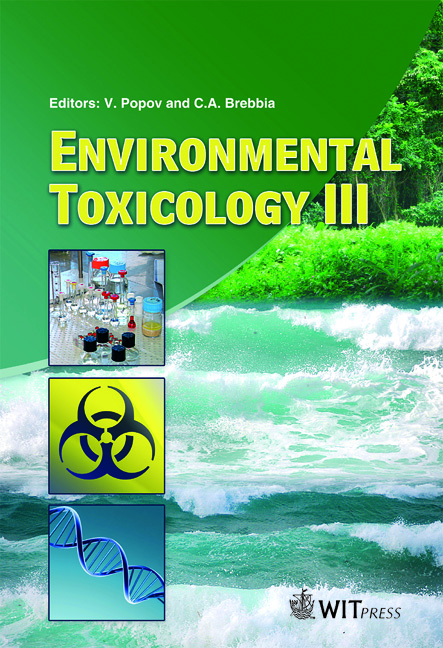Carcinogenesis In Female C57Bl/6J Mice Chronically Exposed To Sodium Arsenate (AsV) In Drinking Water For 2 Years
Price
Free (open access)
Transaction
Volume
132
Pages
10
Page Range
13 - 22
Published
2010
Size
703 kb
Paper DOI
10.2495/ETOX100021
Copyright
WIT Press
Author(s)
M. Krishnamohan, A. A. Seawright, M. R. Moore & J. C. Ng
Abstract
Arsenic is a ubiquitous element in the environment and has been classified as a human carcinogen primarily based on epidemiological evidence. It has been estimated there are over 100 million people globally being exposed to elevated arsenic from both natural and anthropogenic sources. Surprisingly, positive carcinogenicity animal studies were lacking until recent years. We aim to validate inorganic arsenate carcinogenic effect in C57Bl/6J mice, and establish the dose-response relationship using environmental concentrations of arsenic similar to those found in typical endemic-areas. Mice were given 0, 100, 250 or 500 μg As/L in the form of sodium arsenate in drinking water ad libitum over 2 years. Tumours occurred after about 18 months of arsenic exposure otherwise the animals appeared to be normal in their appearance and behaviour. Incidences of all types of tumours and non-tumourous lesions in the treated groups were higher than those observed in the control group. The induction of tumours was in a dose-response manner for some tumour types. Enlargement of the mesenteric lymph node due to hyperplasia or neoplasia of lymphoid elements was commonly observed. Apart from abdominal cavity lymph nodes, tumours were frequently observed in the liver, spleen and intestinal wall, and to a lesser extent in the lung with various other tissues also occasionally affected. Of the non-tumourous lesions, haemorrhagic ovarian cysts occurred more frequently in the treated groups than in the control group. Our results suggest that the C57Bl/6J mouse model can be a useful adjunct for further mechanistic studies of arsenic carcinogenesis. This bioassay data may also be considered for the risk evaluation of chronic exposure to inorganic arsenic.
Keywords
arsenic, arsenate, carcinogenesis, tumours, lymphoma, mice, drinking water, chronic exposure, risk assessment





